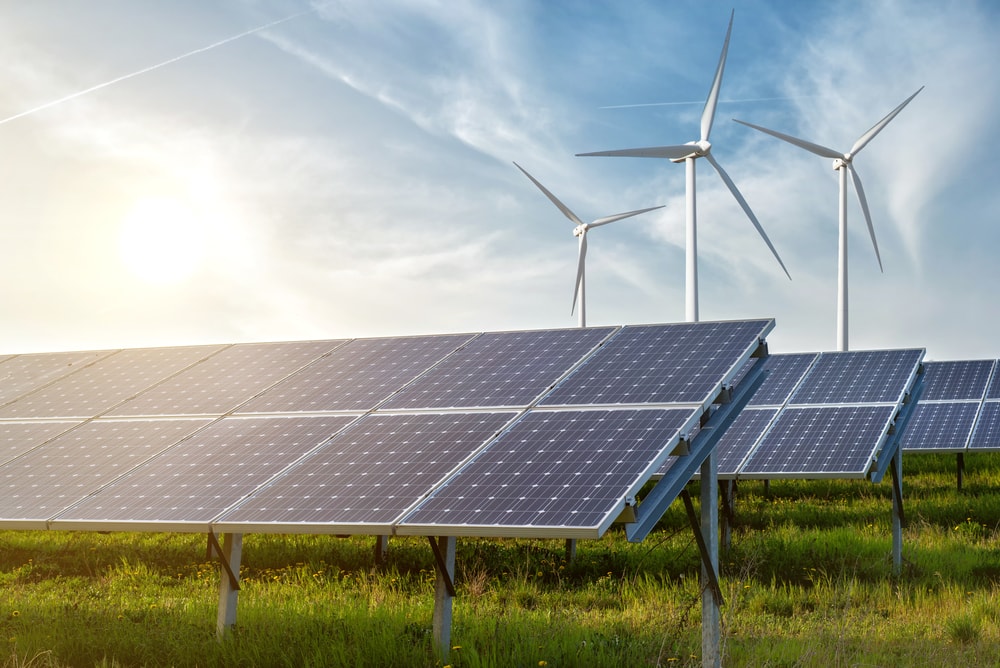The solar energy They are the radiation that we receive from the sun in the form of light and heat. These radiations can be used in various ways to harness them for our survival and economic development. For example: solar project, photovoltaic energy, greenhouses.
The surface of the Earth is surrounded by a mass of air called the atmosphere. In the upper layer of the atmosphere, our planet receives a radiation of 174 petawatts. However, the atmosphere is responsible for rejecting 30% of this radiation, reflecting it into space.
The energy we receive in the form of visible light is what allows us to see the colors of the objects around us. However, we also receive invisible radiation, in the forms of infrared and ultraviolet rays.
Advantages of solar energy
- Low environmental impact. The emission of toxic gases, as occurs with energy from fossil fuels, is avoided. It is also distinguished from hydroelectric energy, which, although it does not emit gases, does affect the environment due to the flooding caused by the creation of reservoirs.
- Renewable. It is a renewable energy, that is to say that it is not spent by its use.
- Autonomy. It allows to obtain energy in areas where the power lines do not reach.
- Easy maintenance. Once a solar energy collection system is installed, its maintenance is very simple.
- Low cost. There is a significant initial investment for the installation of the devices, but after it no expense is required, since it does not use any fuel.
- If photovoltaic solar energy is chosen, the panels can be installed directly on the roofs, that is, they do not take up space.
- Job generator. Although it is a type of energy that does not generate employment in its maintenance, it does in the manufacture of devices.
Disadvantages of solar energy
- Inconstant. It is a source of energy that varies according to the area and the season of the year, so it must usually be used together with some other source of energy. Precisely where there is more radiation are usually places where there are no houses or economic activities.
- If it is used in large towns, an extension of land is required for the installation of the panels, which does not happen in individual houses (see advantages).
- The initial investment may not be affordable for many consumers.
- The technology necessary to use this energy is still under development, so it is not yet fully efficient.
The problem of the inconstancy of solar energy has been tried to solve through its storage. For this it is necessary:
- Extracting hydrogen from water using heat energy from the sun.
- Produce ammonia from a reaction between nitrogen and the hydrogen obtained in point 1. To produce this reaction, the thermal energy of the sun, or a source of electrical or motor energy, is also used.
In this way, the thermal energy of the sun is stored in ammonia, in a similar way to what happens with batteries.
Examples of solar energy

- Solar project. It is a more ambitious form of solar thermal energy than supplying energy to a house. Power plants are used where the sun’s energy is concentrated at one point thanks to a large number of mirrors. In this way, heat is produced that is transformed into electrical energy thanks to a steam turbine.
- Thermal solar energy. Solar energy is used to produce heat energy, which makes it possible to heat water in homes, offer heating or even convert it into mechanical energy that is converted into electrical energy. For this, devices called energy collectors are used. This technology is also called “solar stove”.
- Photovoltaic energy. Radiation is used thanks to a device called a photovoltaic cell. This is currently the third most widely used form of renewable energy. Photovoltaic cells are installed in modules that group between 40 and 100 cells connected to each other. These modules can be installed on the roofs of houses, or occupy large open areas where the sun is continuously falling (without shadows from trees, buildings, hills, etc.). Depending on the latitude in which they are, some buildings can take advantage of their facades to install these panels.
- Greenhouses. Without using any type of technology, greenhouses are ways of harnessing the thermal energy of the sun. In this case, there is no transformation of energy into electrical energy, but it continues to be heat.
Other types of energy
| Potential energy | Mechanical energy | Kinetic energy |
| Hydroelectric power | Internal energy | Caloric energy |
| Electric power | Thermal energy | Geothermal energy |
| Chemical energy | Solar energy | Sound energy |
| Wind power | Nuclear energy | Hydraulic energy |
